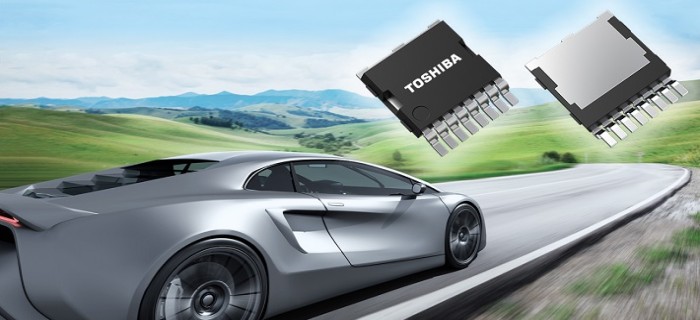
New N-channel power MOSFETs takes advantage of advanced heat dissipation capabilities to support larger automotive currents
07 Feb 2023
Toshiba Electronics Europe has launched two new automotive-grade 40V N-channel power MOSFETs suitable for next-generation vehicle designs. Both the devices, XPQR3004PB and XPQ1R004PB, use the large transistor outline gull-wing leads package format – referred to as L-TOGL™. Thanks to their L-TOGL packages, and the enhanced heat dissipation characteristics derived, the newly released Toshiba power MOSFETs are highly optimized for handling large currents. They each feature high drain current ratings (400A for the XPQR3004PB and 200A for the XPQ1R004PB), plus industry-leading on-resistance values (0.3mΩfor the XPQR3004PB and 1mΩfor the XPQ1R004PB).
There is no internal post structure (solder connection) on these devices. This is achieved by connecting the source and outer leads with an innovative copper clip. The use of a multi-pin structure for the source leads reduces the package resistance (and associated losses) by about 70% when compared with the existing TO-220SM(W) package. The resulting drain current (ID) rating of the XPQR3004PB, represents a 60% increase over the existing TKR74F04PB, housed in the TO-220SM(W) package. Furthermore, the thick copper frame reduces junction-to-case thermal impedance substantially. It is 0.2°C/W for the XPQR3004PB and 0.65°C/W for the XPQ1R004PB. This eases heat dissipation, lowers operating temperatures, and enhances reliability.
Intended for use in demanding automotive applications at temperatures up to 175°C, the XPQR3004PB and XPQ1R004PB power MOSFETs are both AEC-Q101 qualified. Their gull-wing leads reduce mounting stress and allow easy visual inspection – thereby helping to improve the solder joint reliability.
When used in high-current automotive applications, such as semiconductor relays or integrated starter generators (ISGs), the XPQR3004PB and XPQ1R004PB power MOSFETs enable designs to be simplified and the number of MOSFETs required to be fewer. This helps to achieve reduction in size, weight, and cost.



leave your comment